Вы здесь
Ancient settlement Otrar.
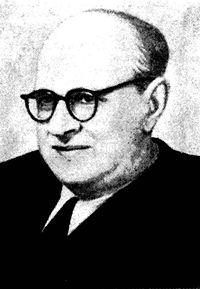
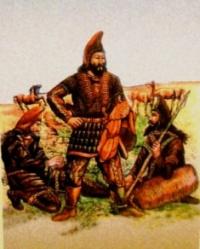
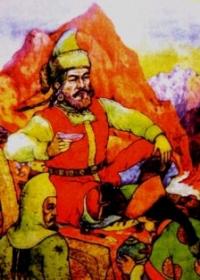
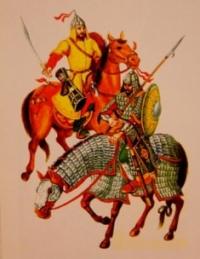
Tours on historical and archeologic monuments of Kazakhstan.
"Otrar is mentioned in the road sketches of almost all Arabic and Persian authors who had ever visited this region. Otrar is the native town of one of the greatest Oriental philosophers – Abu Nasr Al-Farabi (870-950)"
Excursions to ancient monuments of Kazakhstan.
The ancient settlement of Otrar was one of the biggest and the most developed cities in the territory of Kazakhstan in period of the XI - XVIII centuries. The Otrar oasis is located in present Otrar district of South-Kazakhstan region in 10 kilometers to the west of the railway station of Timur nearby with the present village of Talapty in 57 kilometers to the south of the city of Turkestan not far from influx of the river of Arys into Syr Daria river.
The settlement is a remain of the ancient city of Otrar also known as Farab, center of medieval trade. Besides Otrar the territory or such cities as Kuiruktoba, Kok-Mardan, Altyntobe and Mardan-Kuik are also adjoins to territory of the oasis.
The first city settlement in the place of Otrar dates back to the II century BC. The kangju people are considered as the founders of it. In the ancient Turkic runes (VI - VIII centuries) the city is mentioned as Kangu-Taraban.
In 737 - 748 Kangu-Taraban was conquered by the Arabs and was under their control. In the period of the Arab control the city becomes a centre of culture and science in Central Asia.
Famaous scientists lived here.
Abu Nasr Al Farabi, famous scientist and mathematician, philosopher of East known as the Second teacher after Aristotle was born here. In the period of the Kara-Khanid governance in 9th-XIII centuries the city reached the highest level of development. In 1219 the city was beset by the Mongol army under the leadership of Jochi, eldest son of Genghis khan.
Dwellers of the city under the auspices of Kair-khan defended the city during seven months. The betrayer named Karadja opened gate of the city. Otrar was destroyed and declined for some time. By the middle of the XIII century Otrar turns into big trade centre.
During Timur’s times it was newly reconstructed. In 1405 Timur dies in one of the palaces of Otrar. The life of Otrar continues until the XVIII century. The town as many other medieval cities consisted of a citadel and a shakristan.
They represent pentagonal hill of 18 meters high. The area of the hill is 20 hectares. It was surrounded with the wall that had escent angle of 70-80 degrees. The citadel is located in the centre of the hill and has got a triangle form with sides of 220 x 220 x 230.
The hill of citadel and shakihristan adjoins the territory of fortified rabid with area of 150 hectares. The results of excavations prove about developed municipal culture. In the IX – XII centuries there were constructed such buildings as bath-houses. In the territory of Otrar’s rabad were explored two bath-houses.
The scientists explored a unique block of ceramists who lived in the city in the second half of the XIII - XIV centuries. Nine workshops were found here. Crafts were also developed in the city. Findings of bronze mirrors and jewelries prove about it.
One of the interesting archeological findings is a excavated palace of governor that dates back to VII - IX centuries. On the floor of the palace were found charred wood boards with carved images of various stories related to life of citizens.
Excavations of Otrar prove about prosperity of the city in the IX - XI centuries. There were collected rich collections of glass wares – pieces of water-bottles, cups, wineglasses, flacons. There are many jewelry including beads made of andradite and carnelian, glass, rings bronze bracelets.
A treasure containing jewelry, bracelets, rings and coins were found in 1974. All coins were silver. They are of various types, monetary courts and periods. During the excavation of late Middle Ages Otrar there were collected many ceramics, metal wares, coins and jewelry, stone wares. Glazed and unglazed ceramics are also various.
There are many jugs, plates, dishes covered with transparent, blue and green enamel. There is notable decline of the quality of glazes and inscriptions between the ceramics of the XVI and first half of XVII centuries and the ceramics of the XVII - XVIII centuries.
The first explorations of Otrar were conducted by members of Turkestan section of amateur archeologists of A.K.Klar and A.A.Cherkassov in 1904. They excavated a range of trench in hope to find remains of palaces and monuments.
But they were disappointed as they found only pieces of ceramics and glass. Further explorations were continued in the end of the 40s of the XX century under the auspices of professor A.N.Bernshtam. The Otrar archeological expedition was organized in 1969, in 1971 it was renamed as Southern Kazakhstan archeological expedition of KazSSR.
The main object of their exploration was Otrar-tobe. Since 1991 Baipakov K.M. led the excavations in Otrar. The new project under the auspices of UNESCO, Kazakhstan and Japan Target Fund “Conservation and preservation of the ancient city of Otrar” started in 2001.
The key goals of the project: formation of documents base and conservative measures. Implementation of the project allowed museumification of the range of memorials: theFriday mosque in the XVI century, a city block of the XVI century, a building of the XI - XII centuries, walls, central gates and the gates “Darvaza-i sufi”, stratigraphical pit, bath-house of the XIV century.
Geographic coordinates of the Otrar settlement: N42 ° 51'09.46 "E68 ° 18'15.68"
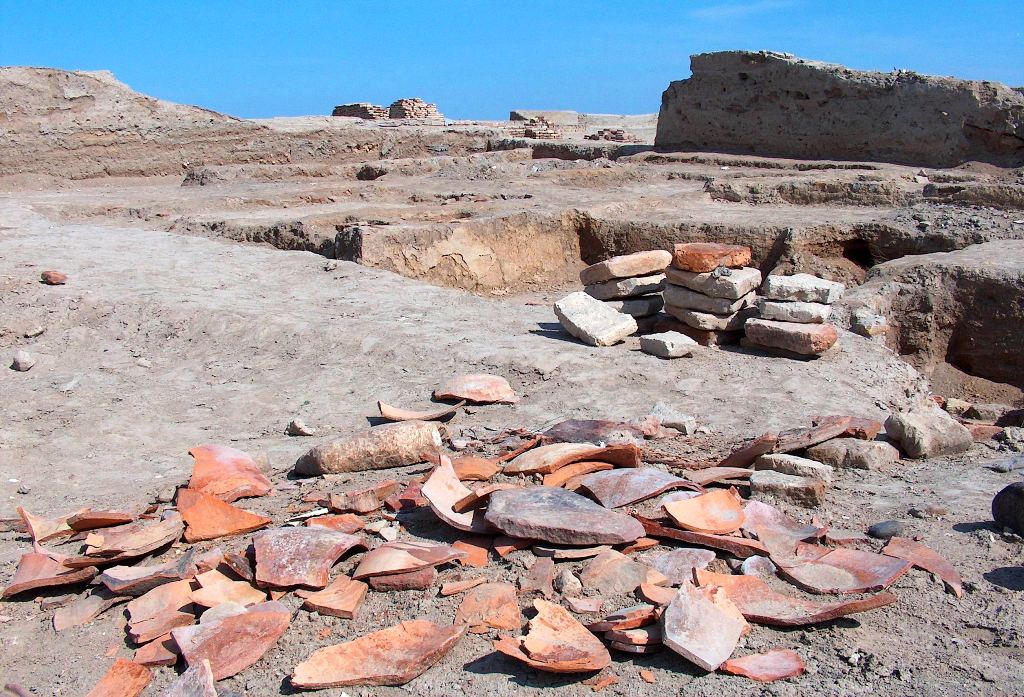
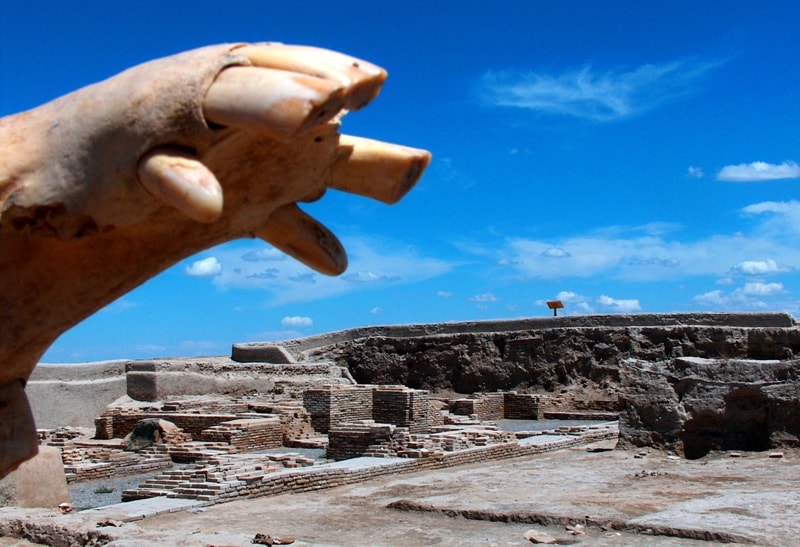
Authority:
«Monuments of the Central Asia». The author of M. Khahsimov. Publishing house, Saga, 2001. Samarkand. «Masterpieces of the Central Asia», Tashkent, Publishing house Sanat, 2004. www.farsah.kz. «Ancient Kazakhstan» Arias, Saki, Hun, Turkis. The children's encyclopedia of Kazakhstan. Almaty, 2007, publishing house Aruna. Medoev A.G., «Engravings on rocks.Sary-Arka, Mangyshlak», Almaty, Zhalyn, 1979. Marikovskij P.I. «Figures on rocks of Southern and Central areas of Kazakhstan», Almaty, Tuganolke, 2004. http://culturemap.kz
Photos
Alexander Petrov.







